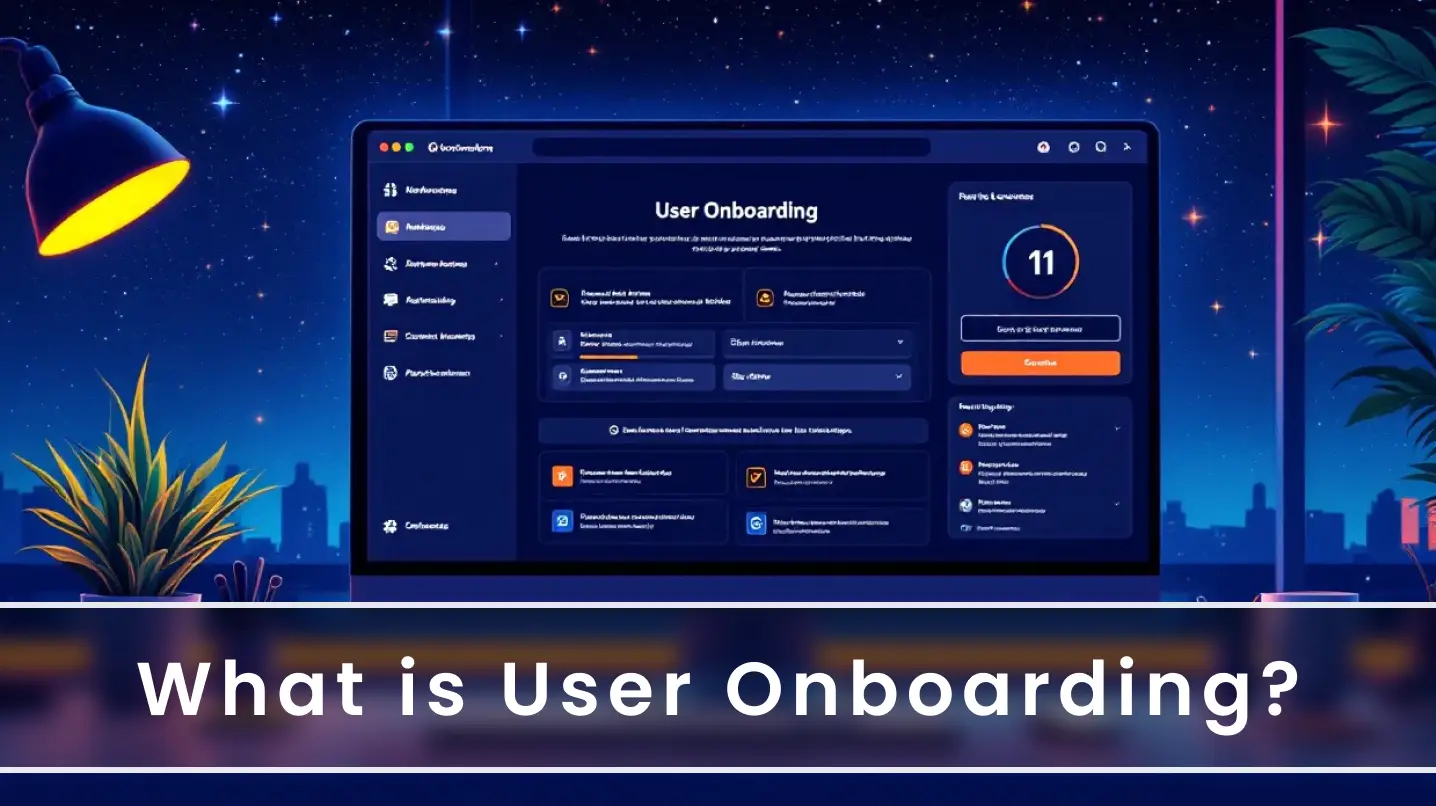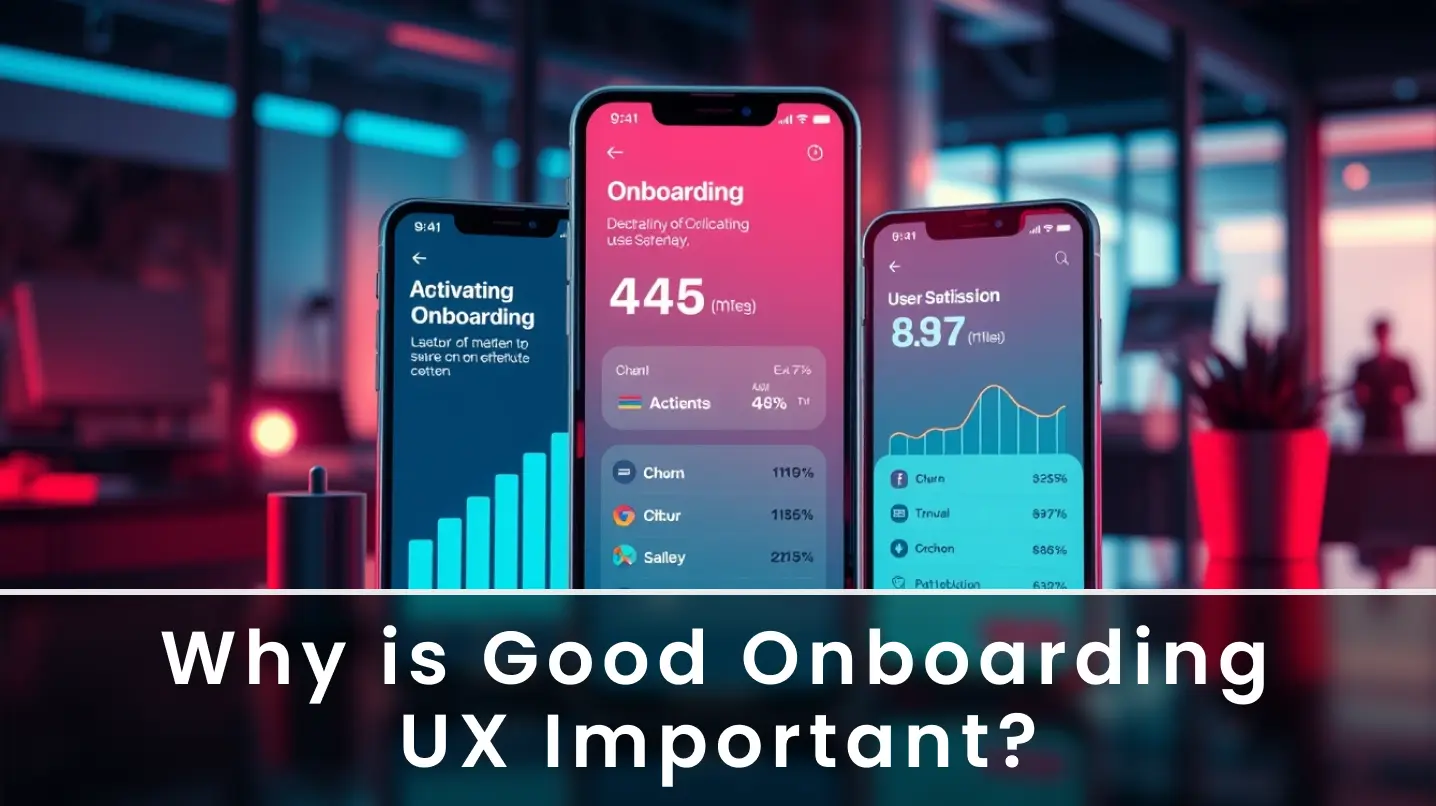Introduction
In today’s fast-paced digital landscape, onboarding users is not just a step in your product flow-it’s the first impression that sets the tone for user retention and satisfaction. At Pedals Up, we’ve worked across industries to craft user experiences that engage users from day one. In this blog post, we’re diving into some lessons from the top companies that have mastered the art of onboarding UX design and what you can learn to elevate your product experience.

What is user onboarding?
User onboarding guides new users through your product and helps them understand its core value. A well-designed onboarding experience means that users will know how to navigate your product, complete key actions, and quickly see its benefits.
Onboarding comes in various forms: from guided tours to interactive walkthroughs, and tooltips to empty state prompts. However, the end objective remains the same: to minimize friction, make things clearer, and get users to achieve their goals easily.

Why is good onboarding UX important?
Onboarding deserves your attention because of it:
Boosts Activation Rates: Helps users complete their first actions to experience your product’s value.
Reduces Churn: A smooth onboarding flow minimizes the chance of losing your users.
Boosts User Satisfaction: A transparent and interesting onboarding process creates trust and confidence.
Indeed, according to studies, 86% of users will remain loyal to a brand with a frictionless onboarding process. That is a number no product team can ignore.
Lessons from the Best Companies in Onboarding UX

1. Dropbox – Keep It Simple, Yet Impactful
Dropbox’s onboarding process is the very definition of simple. With a minimalist design and step-by-step instructions, Dropbox ensures that a new user will know exactly what to do. For instance, the introductory flow is centered around one action: uploading your first file. By eliminating distractions, they make the process intuitive and frictionless.
Key Takeaway: Focus on minimalism and a clear call to action to keep users engaged without overwhelming them.
2. Duolingo – Gamification and Progress Feedback
Duolingo’s onboarding is as engaging as the app itself. By integrating gamification elements like streaks, badges, and rewards, Duolingo motivates users to stay consistent. Their onboarding highlights small wins, creating a sense of accomplishment right from the start.
Key Takeaway: Gamify the onboarding experience to keep users motivated and invested.
3. Slack – Emphasize Product Value Early
Slack takes a conversational, friendly onboarding flow. Its core value is really about making team collaboration seamless. From the moment a user signs up for Slack, the product walks him/her through setting up channels, inviting his/her team members, and sending their first message. The outcome? Users understand just what Slack has done for them right away.
Key Takeaway: Make explicit within the first few minutes for the user, what problem your product solves.

4. Trello – Let Users Dive In
Trello uses a hands-on approach to onboarding. Instead of a lengthy tutorial, Trello allows users to interact with a pre-made board that demonstrates how the product works. This learn-by-doing method makes it easy for users to understand the functionality and apply it to their needs.
Key Takeaway: Offer a “learn by doing” approach to familiarize users quickly.
5. Canva – Celebrate User Success
Onboarding flows on Canva are so easy that they lead users to make their first design in a matter of minutes. This is done by celebrating small milestones and giving them tips along the way to keep them interested and motivated enough to discover more.
Key Takeaway: Celebrate small wins to build user confidence and create a positive emotional connection.
Key Principles for Designing Great User Onboarding
From Pedals Up experience, here are some principles to consider when designing an effective onboarding experience:
- Understand Your Users: Personalise the experience by user goals or segments.
- Clear is Key: Use simple language, visuals, and tooltips to navigate users.
- Interactive Guidance: Help users get used to the app with hands-on tutorials or a step-by-step walkthrough.
- Instant Value Delivery: Highlight your core value as soon as possible for your product.
- Measure and Iterate: Use data and user feedback to continuously iterate on your onboarding flow.
How to Measure Onboarding Success

Monitor these metrics to ensure your onboarding flow is working as intended:
- Time to Value (TTV): The time it takes for users to experience the value of the product.
- User Activation Rate: Percentage of users who complete key onboarding actions.
- Retention Rate: Percentage of users who return after their first session.
Consider also gathering feedback through surveys and heatmaps to understand where users drop off and refine accordingly.
Conclusion

A great onboarding experience is what can shift your user journey from confusion to confidence, with a foundation laid for long-term loyalty. Here’s how learning from the best – Dropbox, Duolingo, Slack, Trello, and Canva – and implementing these principles to your product, you can design an onboarding flow users will love.
At Pedals Up, we specialize in designing seamless onboarding experiences that align with your brand and business goals. Ready to elevate your product’s user experience? Let’s build something amazing together.




